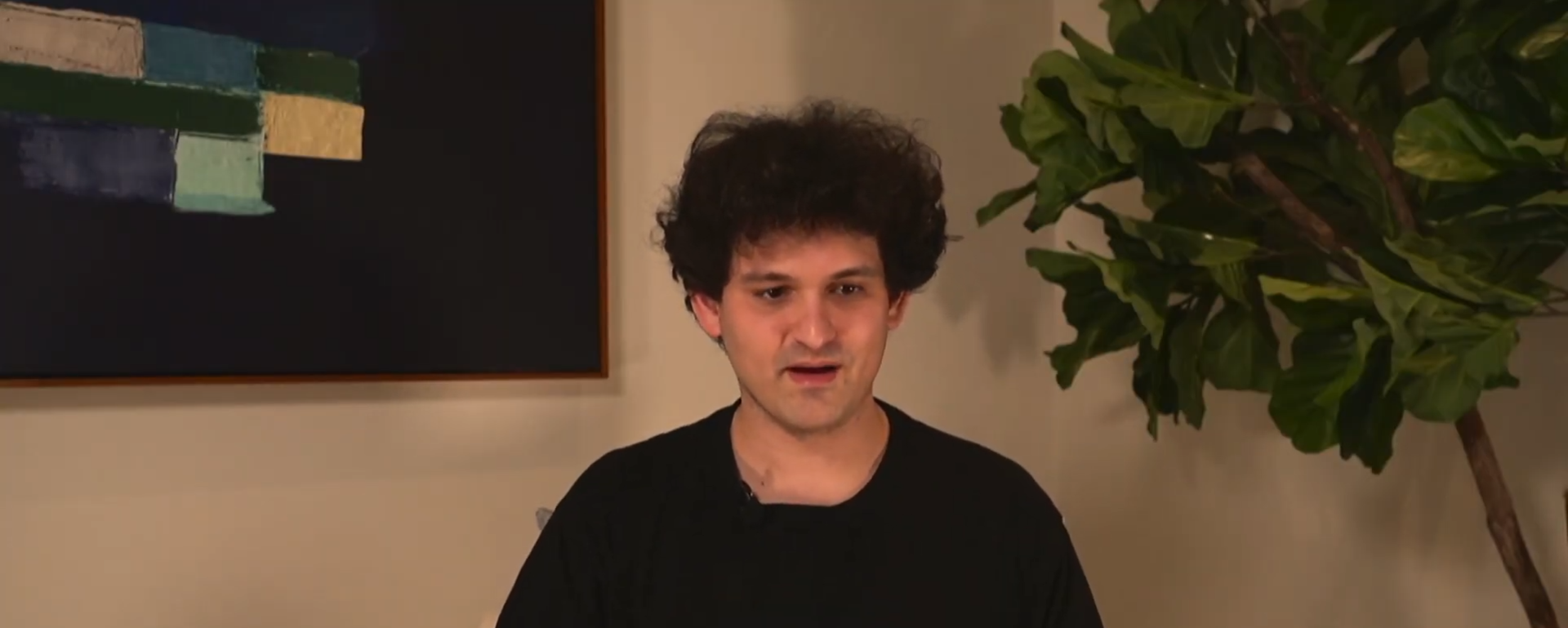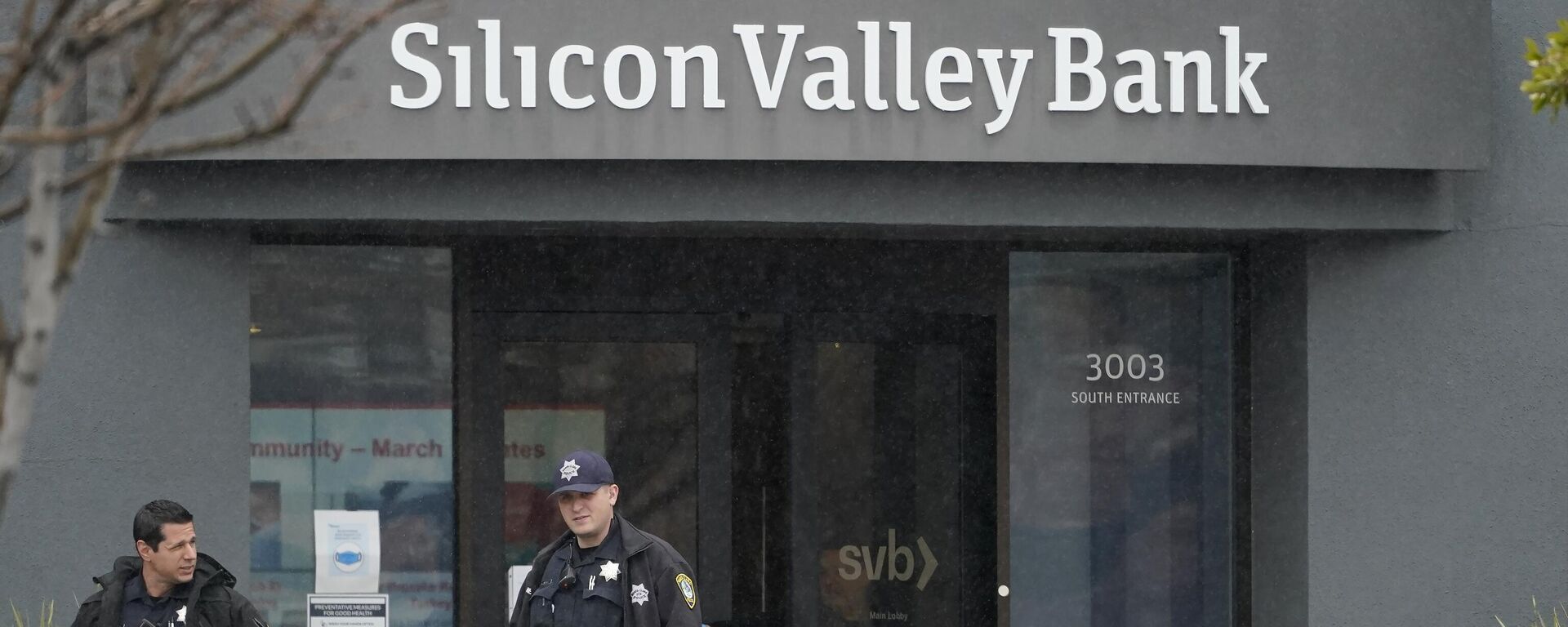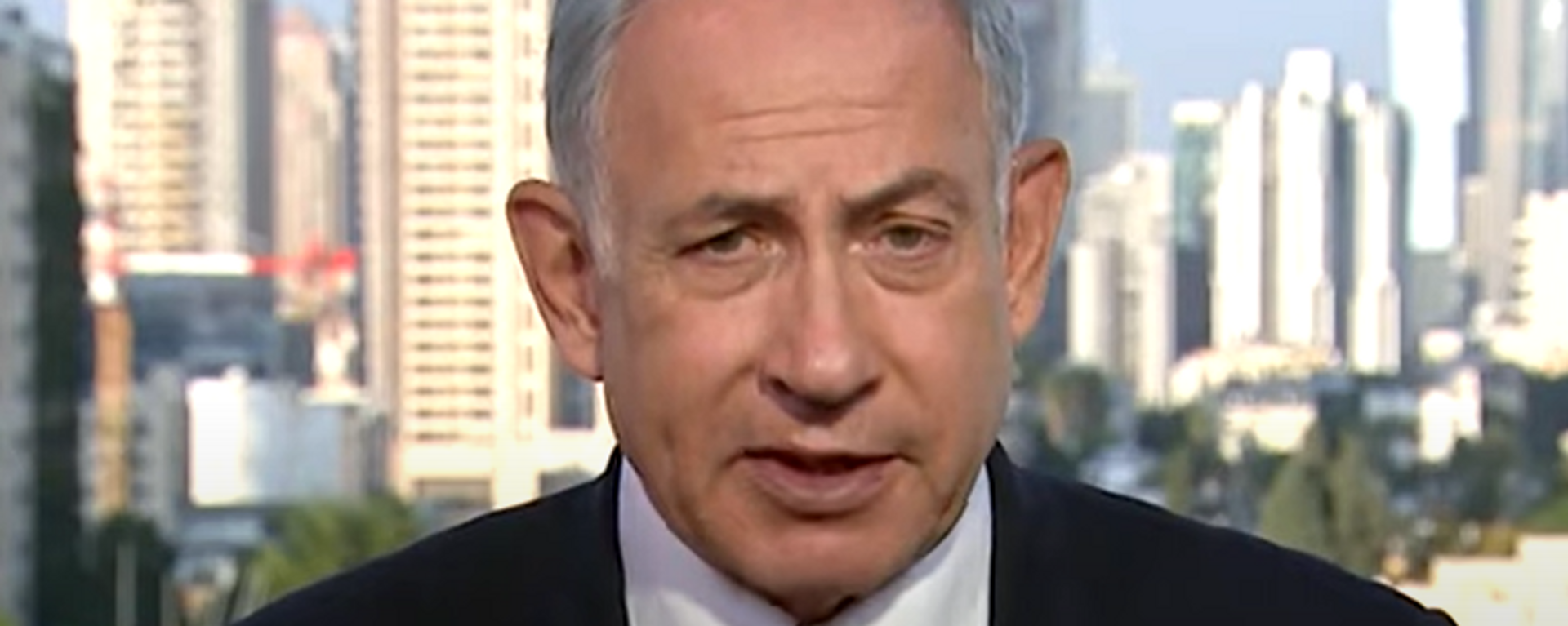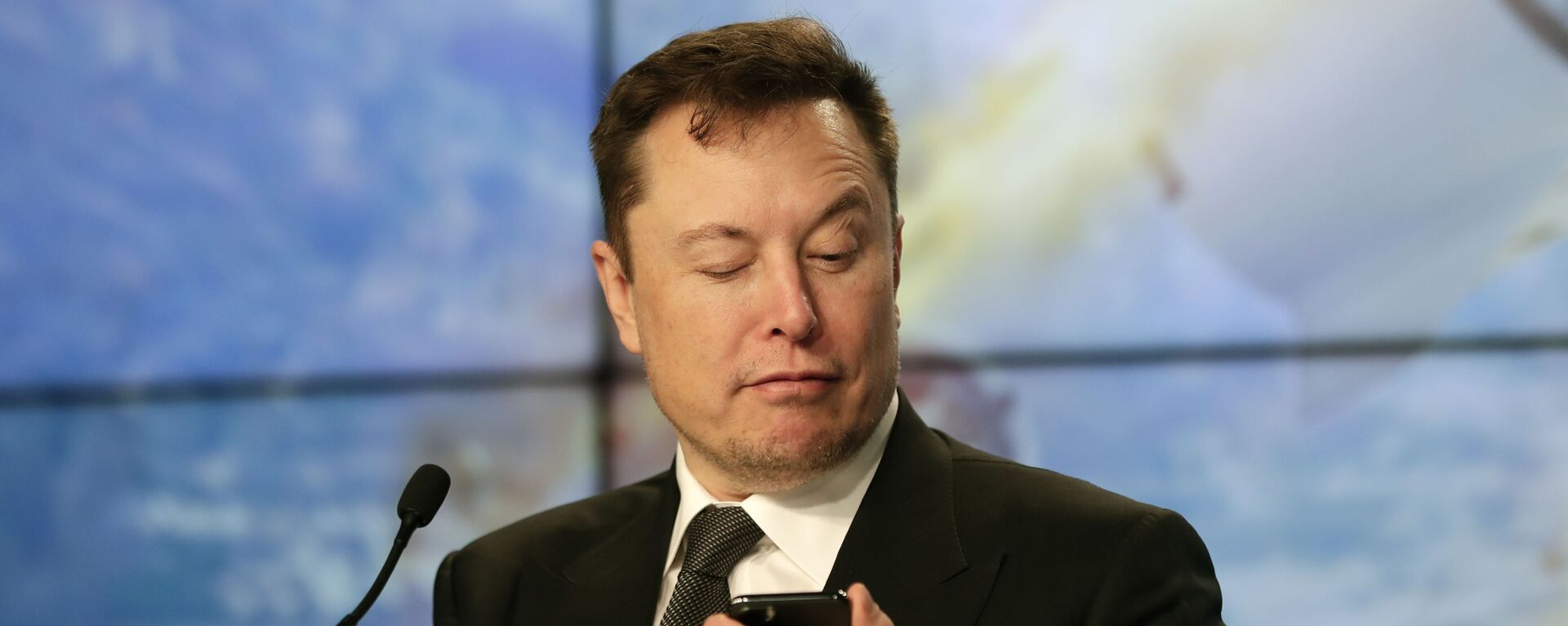https://sputnikglobe.com/20230312/second-largest-bank-collapse-in-us-history-what-happened-to-svb-and-what-comes-next-1108312203.html
Second Largest Bank Collapse in US History: What Happened to SVB, and What Comes Next?
Second Largest Bank Collapse in US History: What Happened to SVB, and What Comes Next?
Sputnik International
California-based commercial lending giant Silicon Valley Bank had its charter revoked and was transferred into receivership on March 10 after a bank run – which occurs when too many clients try to get their money out at once. The collapse sent shockwaves rippling across the financial world. What exactly happened? And what’s next? Sputnik explains.
2023-03-12T13:14+0000
2023-03-12T13:14+0000
2023-03-13T14:09+0000
sputnik explains
bank
collapse
implications
analysis
silicon valley bank collapse
silicon valley bank
silicon valley
https://cdn1.img.sputnikglobe.com/img/106176/34/1061763420_0:180:1920:1260_1920x0_80_0_0_fa49b19ca1c6d09fea654c4f46584010.jpg
At the beginning of the workweek, Silicon Valley Bank (SVB) was, on paper, America’s 16th largest bank, with some $209 billion in assets and $175.4 billion in reported deposits, and more than 8,500 employees at branch offices around the world.On Friday, the bank’s doors were closed and it was taken over by the Federal Deposit Insurance Corporation, which set up a new entity – the ‘Deposit Insurance National Bank of Santa Clara’, and told SVB employees that they would be kept on for 45 more days before being booted out the door. The DINBSC will open up on Monday, and over the coming month and a half, will gradually liquidate itself, making dividend payments to uninsured deposit holders (which account a whopping 93 percent of all deposits, according to Securities and Exchange Commission filings), and payouts to clients with holdings of less than $250,000 (the standard deposit insurance amount). After that, after nearly forty years in the business, SVB will be no more.What Happened?It’s too early to say whether foul play had any major role in SVB’s collapse. It is known that the bank’s chief executive officer, Greg Becker, offloaded $3.6 million in company stock just two weeks before SVB folded, and that he outlined the financial scheme enabling him to do so on January 26. Becker wasn’t alone. Through the month of February, chief financial officer Daniel Beck, general counsel Michael Zucker and chief marketing officer Michelle Draper Michelle Draper each sold a large percentage of their stocks in the bank as well.But it’s important to distinguish correlation from causation. The root of the problem, says banking expert David Tawil, is Fed interest rate policy. As Tawil explained to Radio Sputnik on Friday, SVB’s collapse was the result of the Federal Reserve’s policy of aggressive interest rate hikes over the past year to try to get a grip on inflation. SVB, like many others, bought billions in long-term, low-risk, low-interest Treasury bills, whose value fell as interest rates jumped, leaving the bank short and needing to sell off those Treasuries at a loss.The Biden administration seemed oblivious to the brewing disaster (or apparently hoped the American people would be). The past three days’ worth of statements by the White House press office made no mention of SVB, but did include a “fact sheet” on how President Biden’s budget “advances equity,” featured a joint statement from Biden’s meeting with European Commission chief Ursula von der Leyen, as well as an explainer on the American rescue Plan’s “top 15 highlights from 2 years of recovery.”The Treasury released a brief statement Friday indicating that Secretary Janet Yellen had met with regulators to discuss SVB, in which she “expressed full confidence in banking regulators to take appropriate actions in response” to the bank’s collapse, stressed “that the banking system remains resilient and [that] regulators have effective tools to address this type of event.” The statement did not elaborate on what these measures were.President Biden and California Governor Gavin Newsom also apparently discussed the bank’s failure, with the White House saying the two men “spoke about Silicon Valley Bank and efforts to address the situation,” again without any details.What are the Potential Knock-on Effects?SVB was a whale of a bank, and a household name for clients like tech startups, healthcare and biotech companies, crypto firms and venture capital vultures like Bain Capital and Polaris Partners. The bank reportedly provided financial services to about half of all US-based venture capital-backed startups, tech and life sciences companies, with some of their clients currently wondering where they’re going to get the money to pay employees and to keep the lights on.The bank also had branch offices in about a dozen offices around the world, servicing tech clusters in countries including Canada, the UK, Israel, China, India, Denmark, Germany, Ireland, and Sweden. Companies in Ireland and India seemed particularly hard hit, judging by media reports, while Israeli Prime Minister Benjamin Netanyahu promised “steps to assist the Israeli companies” if necessary in the face of this “major crisis.”Leaving aside the psychological effect that the collapse of a bank this size has on markets, there’s the aforementioned issue of Fed policy – which affects the majority of US financial institutions since most of them are still holding the now toxic low-yield Treasuries. It’s been reported that First Republic Bank, the San Francisco-headquartered banking and wealth management company which ranks 14thamong the US’s largest banks, may also go under in the coming days or weeks. The bank issued a statement Saturday assuring the “continued safety and stability and strong capital and liquidity positions,” including a “well-diversified deposit base” of “over $60 billion of available, unused borrowing capacity at the Federal Home Loan Bank and the Federal Reserve Bank.”However, doomsayers, long-time fiat banking critics, and gold and crypto advocates like Peter Schiff, Erik Voorhees and Gabor Gurbacs say SVB’s collapse could be just the beginning, with Schiff speculating that it will result in “a wave of bank failures,” and Gurbacs pointing out that people “trust banks more than they should” given that the FDIC insurance payout is so low that it’s “practically worthless” for businesses.“This is a potentially negative situation for other medium-sized regional banks. So far, the market assesses the probability of contagion for large banks as low. The systemic risk for large banks is less than for regional ones right now,” BKS Mir investments analyst Igor Gerasimov told Sputnik.Ahmad Khamati-Yazd, former executive director of the Export Development Bank of Iran, suggested that the doomsayers may be overblowing the extent of the damage, emphasizing that based on what we know so far, “the current situation cannot be compared to the crisis of 2008, which was much deeper and more serious.”“Some US banks may face the threat of bankruptcy, and their fate largely depends on the decisions of the US central bank – the Federal Reserve, and whether they decide to save these banks or allow them to collapse,” Khamati-Yazd said in an interview.What ever happens next, David Tawil says it will be sure make Fed chairman Jerome Powell think very carefully before proceeding with another bump in interest rates in the weeks to come.
https://sputnikglobe.com/20221203/ftx-scandal-is-tip-of-iceberg-how-corruption-flourishes-on-the-hill--in-executive-residence-1104998361.html
https://sputnikglobe.com/20230311/domino-effect-feared-after-collapse-of-silicon-valley-bank-as-first-republic-banks-shares-slump-1108292604.html
https://sputnikglobe.com/20230311/israels-netanyahu-says-svb-bankruptcy-created-deep-crisis-in-tech-industry-1108300247.html
https://sputnikglobe.com/20230311/elon-musk-says-open-to-svb-buyout-after-tech-lender-fails-1108297614.html
silicon valley
Sputnik International
feedback@sputniknews.com
+74956456601
MIA „Rossiya Segodnya“
2023
News
en_EN
Sputnik International
feedback@sputniknews.com
+74956456601
MIA „Rossiya Segodnya“
Sputnik International
feedback@sputniknews.com
+74956456601
MIA „Rossiya Segodnya“
silicon valley bank, svb, collapse, causes, consequences, crisis
silicon valley bank, svb, collapse, causes, consequences, crisis
Second Largest Bank Collapse in US History: What Happened to SVB, and What Comes Next?
13:14 GMT 12.03.2023 (Updated: 14:09 GMT 13.03.2023) California-based commercial lending giant Silicon Valley Bank had its charter revoked and was transferred into receivership on March 10 after a bank run – which occurs when too many clients try to get their money out at once. The collapse sent shockwaves rippling across the financial world. What exactly happened? And what’s next? Sputnik explains.
At the beginning of the workweek, Silicon Valley Bank (SVB) was, on paper, America’s 16th largest bank, with some $209 billion in assets and $175.4 billion in reported deposits, and more than 8,500 employees at branch offices around the world.
On Friday, the bank’s doors were closed and it was taken over by the Federal Deposit Insurance Corporation, which set up a new entity – the ‘Deposit Insurance National Bank of Santa Clara’, and told SVB employees that they would be kept on for 45 more days before being booted out the door. The DINBSC will open up on Monday, and over the coming month and a half, will gradually liquidate itself, making dividend payments to uninsured deposit holders (which account a whopping 93 percent of all deposits, according to Securities and Exchange Commission filings), and payouts to clients with holdings of less than $250,000 (the standard deposit insurance amount). After that, after nearly forty years in the business, SVB will be no more.
It’s too early to say whether foul play had any major role in SVB’s collapse. It is known that the bank’s chief executive officer, Greg Becker, offloaded
$3.6 million in company stock just two weeks before SVB folded, and that he outlined the financial scheme enabling him to do so on January 26. Becker wasn’t alone. Through the month of February, chief financial officer Daniel Beck, general counsel Michael Zucker and chief marketing officer Michelle Draper Michelle Draper each
sold a large percentage of their stocks in the bank as well.

3 December 2022, 09:59 GMT
But it’s important to distinguish correlation from causation. The root of the problem, says banking expert David Tawil, is Fed interest rate policy. As Tawil explained to Radio Sputnik on Friday, SVB’s collapse was the result of the Federal Reserve’s
policy of aggressive interest rate hikes over the past year to try to get a grip on inflation. SVB, like many others, bought billions in long-term, low-risk, low-interest Treasury bills, whose value fell as interest rates jumped, leaving the bank short and needing to sell off those Treasuries at a loss.
And that’s exactly what happened. On Wednesday, after reporting
$1.8 billion in losses in its Treasuries and mortgage-backed securities holdings, the bank announced plans to raise $2.25 billion in capital via a share sale, prompting venture capital firms to
urge clients to get their money out, and customers rushing the bank, causing stock prices to plummet. Within hours, a rattled stock market began a selloff, and major banks including JPMorgan, Bank of America, Wells Fargo and Citigroup saw over
$52 billion shaved off their market value. Trading of SVB halted Friday morning.
The Biden administration seemed oblivious to the brewing disaster (or apparently hoped the American people would be). The
past three days’ worth of statements by the White House press office made no mention of SVB, but did include a “fact sheet” on how President Biden’s budget “advances equity,” featured a joint statement from Biden’s meeting with European Commission chief Ursula von der Leyen, as well as an explainer on the American rescue Plan’s “top 15 highlights from 2 years of recovery.”
The Treasury released a
brief statement Friday indicating that Secretary Janet Yellen had met with regulators to discuss SVB, in which she “expressed full confidence in banking regulators to take appropriate actions in response” to the bank’s collapse, stressed “that the banking system remains resilient and [that] regulators have effective tools to address this type of event.” The statement did not elaborate on what these measures were.
President Biden and California Governor Gavin Newsom also apparently discussed the bank’s failure, with the White House saying the two men “spoke about Silicon Valley Bank and efforts to address the situation,”
again without any details.
What are the Potential Knock-on Effects?
SVB was a whale of a bank, and a household name for clients like tech startups, healthcare and biotech companies, crypto firms and venture capital vultures like Bain Capital and Polaris Partners. The bank reportedly provided financial services to
about half of all US-based venture capital-backed startups,
tech and life sciences companies, with some of their clients
currently wondering where they’re going to get the money to pay employees and to keep the lights on.
The bank also had branch offices in about a dozen offices around the world, servicing tech clusters in countries including Canada, the UK, Israel, China, India, Denmark, Germany, Ireland, and Sweden. Companies in
Ireland and
India seemed particularly hard hit, judging by media reports, while Israeli Prime Minister Benjamin Netanyahu promised “steps to assist the Israeli companies” if necessary in the face of this “major crisis.”
Leaving aside the psychological effect that the collapse of a bank this size has on markets, there’s the aforementioned issue of Fed policy – which affects the majority of US financial institutions since most of them are
still holding the now toxic low-yield Treasuries. It’s been
reported that First Republic Bank, the San Francisco-headquartered banking and wealth management company which ranks 14thamong the US’s largest banks, may also go under in the coming days or weeks. The bank issued a statement Saturday assuring the “continued safety and stability and strong capital and liquidity positions,” including a “well-diversified deposit base” of “over $60 billion of available, unused borrowing capacity at the Federal Home Loan Bank and the Federal Reserve Bank.”
However, doomsayers, long-time fiat banking critics, and gold and crypto advocates like Peter Schiff, Erik Voorhees and Gabor Gurbacs say SVB’s collapse
could be just the beginning, with Schiff
speculating that it will result in “a wave of bank failures,” and Gurbacs pointing out that people “trust banks more than they should” given that the FDIC insurance payout is so low that it’s “practically worthless” for businesses.
“This is a potentially negative situation for other medium-sized regional banks. So far, the market assesses the probability of contagion for large banks as low. The systemic risk for large banks is less than for regional ones right now,” BKS Mir investments analyst Igor Gerasimov told Sputnik.
Ahmad Khamati-Yazd, former executive director of the Export Development Bank of Iran, suggested that the doomsayers may be overblowing the extent of the damage, emphasizing that based on what we know so far, “the current situation cannot be compared to the crisis of 2008, which was much deeper and more serious.”
“Some US banks may face the threat of bankruptcy, and their fate largely depends on the decisions of the US central bank – the Federal Reserve, and whether they decide to save these banks or allow them to collapse,” Khamati-Yazd said in an interview.
What ever happens next, David Tawil says it will be sure make Fed chairman Jerome Powell
think very carefully before proceeding with another bump in interest rates in the weeks to come.





